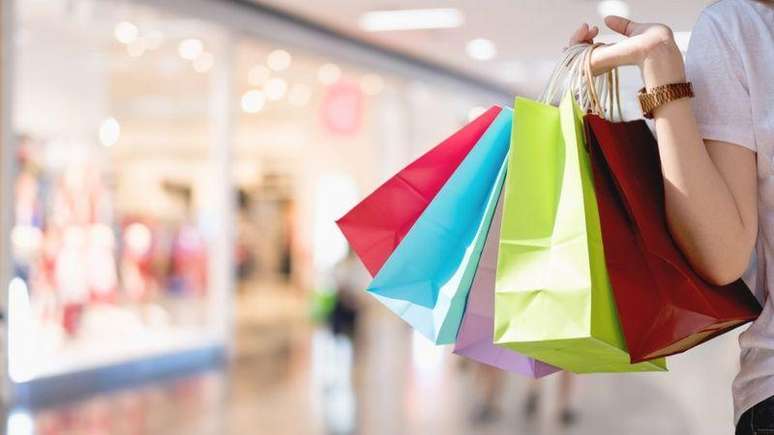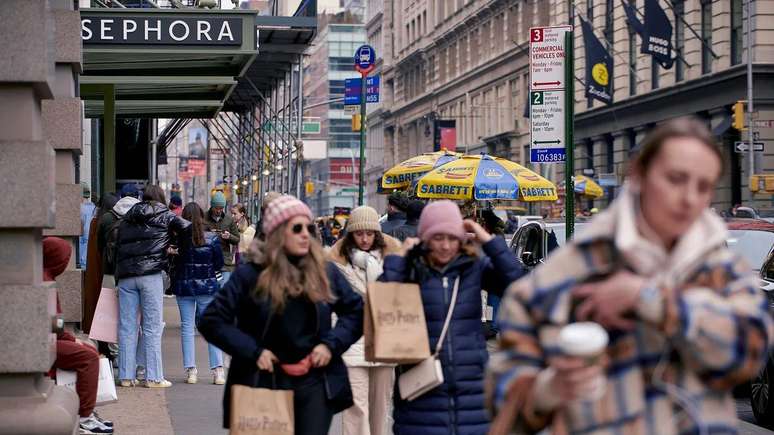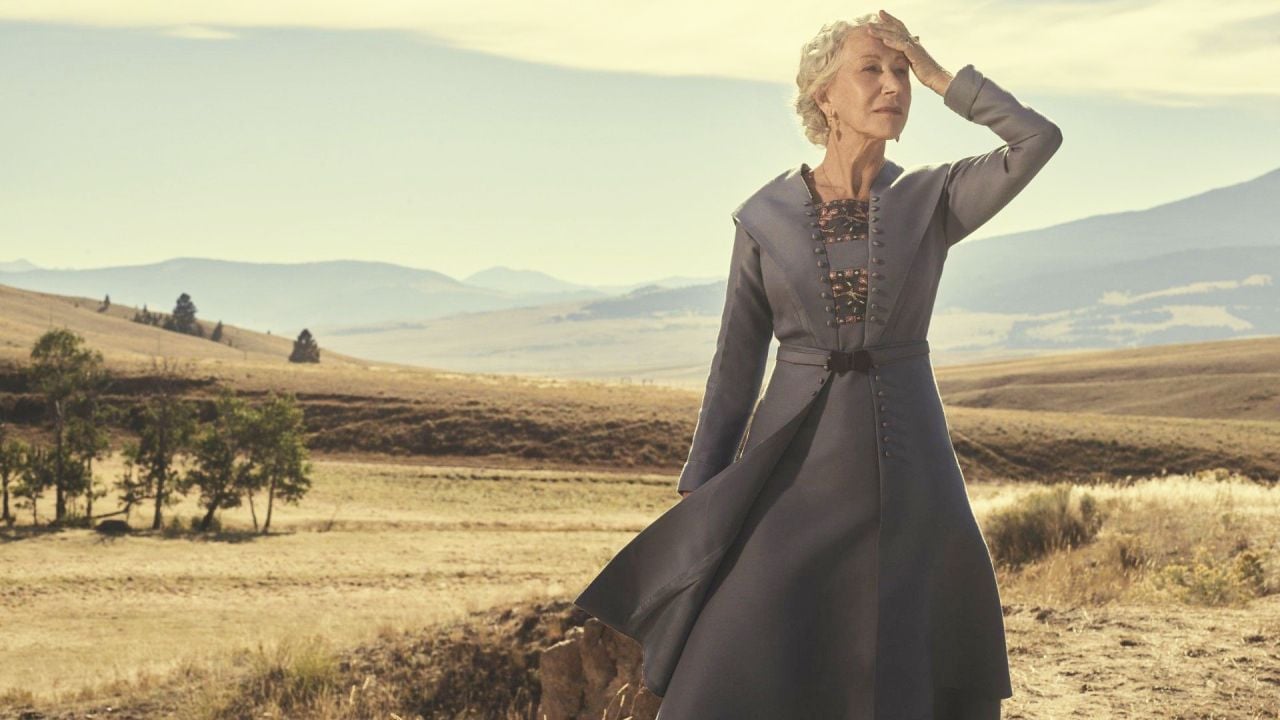Children’s consumption of cosmetics has increased in recent years, influenced by marketing strategies and social media.
Beauty consumers, both adults and teenagers, are increasingly complaining on social media that girls under 12 are invading luxury cosmetics stores, such as Sephora and the US-based Ulta Beauty.
On TikTok and Instagram the hashtags #sephora and #sephorakids reveal the conflict in all its force.
They show messy stores and produce counters and describe invasions by young consumers who are allegedly rude to other customers and employees.
Reports say girls are even snatching products from other shoppers’ hands, as shown by one TikTok user.
The specific brand of the product in question is Drunk Elephant (“Drunk Elephant”, in Portuguese), which Glamor magazine recently called “an obsession among girls aged 10 to 12”.
Many of these social media posts have gone viral.
They demonstrate that Generation Alpha (born since 2010) is purchasing products that contain ingredients such as retinol, powerful exfoliating acids, expensive humectants, dyes and serums designed to minimize the effects of aging – products traditionally aimed at older consumers.
The Japanese conglomerate Shiseido purchased in 2019, for 845 million dollars (about R$ 4.16 billion), the Drunk Elephant brand – which defines itself as “clean beauty” (“clean beauty”, in Portuguese), cosmetics market free of ingredients such as sulphates, silicones, parabens and colourants, not tested on animals and with more sustainable packaging.
The brand reacted to all this attention by explaining on Instagram last December which of its products would be specifically recommended for children.
While marketing campaigns and beauty influencers lure consumers into the cosmetics aisles, kids are actually flooding stores and taking home all the hyaluronic acid their little hands can carry, as social media users and the apparent popularity.
“Yes, kids aren’t just invading Sephora stores. They’re making a lot of purchases of these products online,” according to marketing professor Denish Shah, from the Robinson School of Business at Georgia State University, in the United States.
“This category, overall, is seeing a huge increase in sales.”
Shah mentions the cosmetics brand Elf, which originates from California, USA.
He says that as a publicly traded company, elf’s share prices have remained “out of the norm” of late.
According to the MarketWatch website, the price of elf shares has increased by 203% in the last year. And these high prices are a direct result of the company’s tremendous sales growth.
“The company’s sales have increased exponentially in the past year and this is significant, as they position themselves as truly affordable cosmetics,” explains Shah.
“And if you look at their marketing efforts, they’re all targeting the 10- to 12-year-old demographic.”
Promoting products to a younger demographic could simply be related to the overall growth seen in the industry, but Shah says the link is there and that elf is just one example of the cosmetics and skincare phenomenon among kids aged between 10 and 12 years as a whole. .
According to Shah, many companies in the beauty and skincare industry are targeting younger and younger customers and achieving huge sales volumes.
Data from the Statista portal shows that the baby and children’s skin care products market is expected to show an annual growth rate of around 7.71% until 2028, when it will reach a market volume of 380 million dollars (about R$1.87 billion) worldwide.
In the same year, the number of users of this type of product is expected to reach 160.7 million people.
Products for children

The problem isn’t just children trying their mothers’ creams.
In fact, the industry is expanding to reach consumers of a wider age range.
“The market is growing very quickly. We are launching many new brands [produtos] specifically for girls between 10 and 12 years old”, explains Jessica DeFino, creator of the newsletter The Unpublishable (“The Unpublishable”, in free translation), dedicated to the behind the scenes of the beauty industry.
DeFino cites several cosmetics and skin care brands that have launched targeted products in recent years, not just for children aged 10 to 12, but for young adults.
Parents of young children may have already heard of Yawn, an American company that offers makeup and skin care products to customers aged 3 and up.
Bubble, which calls itself the “new school of skincare,” has been offering products to texturize skin and fight acne since 2020.
They are now sold in US beauty store chain Ulta and in pharmacies across the US.
Gryt, launched in 2023, says its products are aimed at children and teenagers aged 10 and up, but can also be used by children as young as eight.
“I’ve seen an explosion of baby products,” DeFino says.
“I’m also seeing more and more girls using adult products before their teenage years… From a business perspective, the marketing is there. These younger age groups are being actively targeted.”
And it’s not just about specific cosmetics stores. American pharmacy chains, such as CVS and Walgreens, have revamped themselves in recent years to put beauty products in a more prominent position.
These products include cosmetics actively promoted to children, using TV shows and children’s books in their marketing strategies.
Many of these general merchandise pharmacies are where children have their first shopping experiences with their parents, long before they are old enough to visit specialty stores like Sephora on their own.
According to DeFino, marketing for children’s cosmetics brands takes many forms.
In addition to creating products aimed at attracting younger consumers, he says marketing to this audience has spread through social media.
This includes a growing number of teens demonstrating how to use these products to their followers. They are the “skininfluencers”, the influencers of skin care.
Post-pandemic legacy
This all comes at a time when children are spending more and more time on social media after being cooped up during the pandemic.
These children are among the largest consumers of some social media platforms, according to Shah, who is the founding director of the Social Media Intelligence Lab at Georgia State University.
All this time spent on social media exposes these young users to influencers paid by brands to use and promote beauty and skincare products.
And increasingly sophisticated algorithms fuel this exposure, presenting influencers and beauty tips to users, after some research on the topic.
Add in the fact that preteens and teens worry about their appearance and we have a “perfect storm.”
“Children care about their personal appearance,” Shah says. “They are very aware of how their growing bodies and their developing personal identities will transform.”
“There is a lot of sensitivity about this and has been for decades. These two factors combined are what really drive sales in these younger demographic groups,” the professor continues.
But are Sephora and Ulta stores really overrun with pre-teen shoppers?
The two brands did not want to comment on the matter, but the market for products aimed at young people is expanding and these products are sold in both stores.
Although the data on the increase in beauty consumers does not include the age of Drunk Elephant customers, Denish Shah has another very compelling argument about changing marketing in the cosmetics and skincare industry. And many parents will agree with him.
“My daughter was influenced by this. She asked for these products as gifts and had never done this before.”
Read the original version of this report (in English) on the website Working life of the BBC.
Source: Terra
Ben Stock is a lifestyle journalist and author at Gossipify. He writes about topics such as health, wellness, travel, food and home decor. He provides practical advice and inspiration to improve well-being, keeps readers up to date with latest lifestyle news and trends, known for his engaging writing style, in-depth analysis and unique perspectives.








